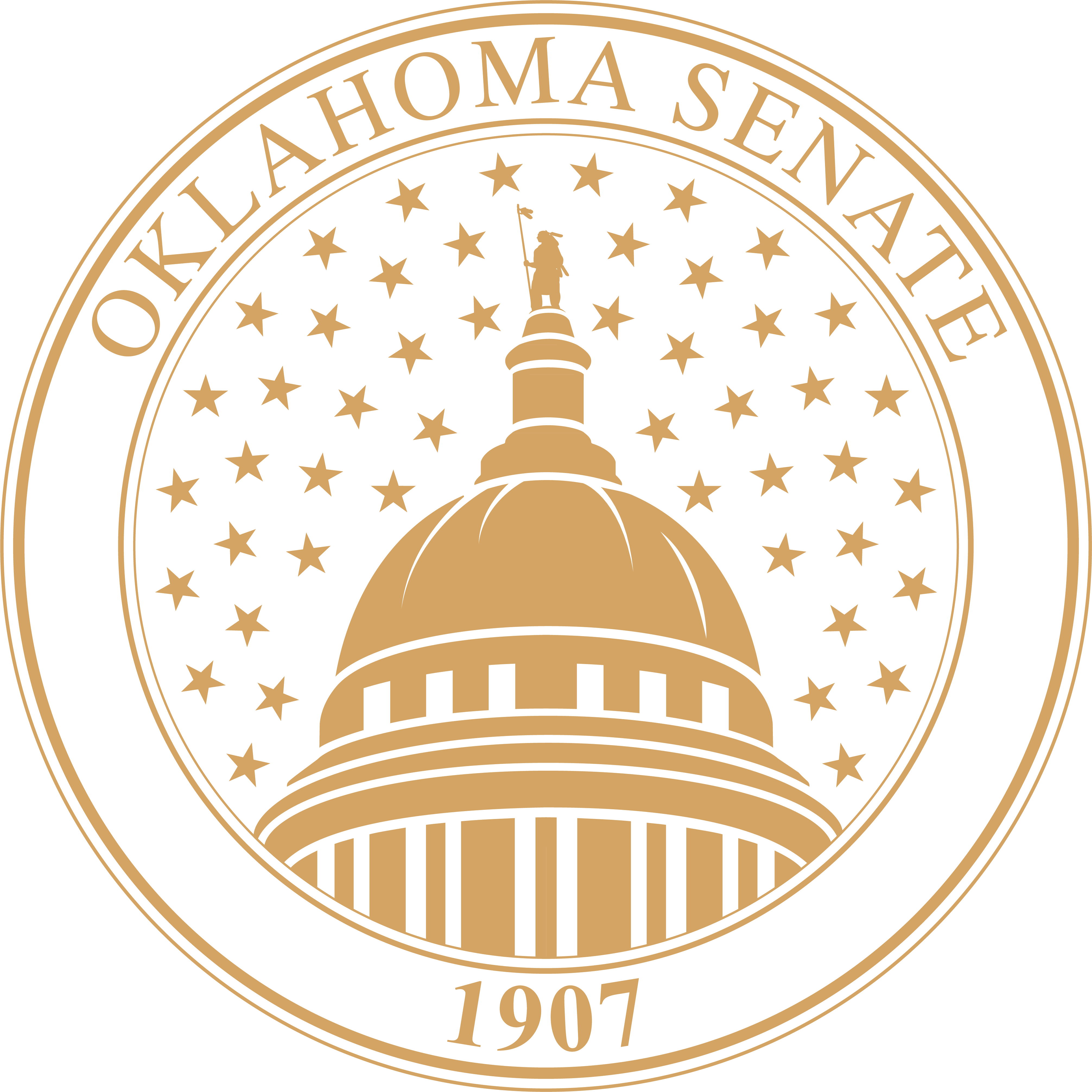In order to provide equal access and equal opportunity to people with diverse abilities, this site has been designed with accessibility in mind. Click here to view
Joint committee studies state employee insurance plans
A joint committee of Senate and House members met Tuesday to study state employee insurance plans and how to better serve the health needs of state and education employees while also controlling health care costs to the state. The study was requested by Sen. Kim David, Chair of the Senate Appropriations Subcommittee on Health and Human Services, and Rep. Michael Rogers, R-Broken Arrow.
“We wanted to look at the current structure of Oklahoma’s different plans and specifically the difference between the state’s self-funded plan, HealthChoice, and the private insurer market,” said David, R-Porter. “We need to know why we’re self-funded, if there’s a benefit in that, what type of competition we have with the private plans and why we’re not able to curb the ever increasing costs of our health insurance.”
She pointed out that HealthChoice raised rates by five percent last year and are raising them an additional eight percent in 2017.
Rogers said he was concerned about the astronomical costs of insuring the state’s school employees.
“My concern is why have we had a $162 million increase in education employee premiums since 2008? Are we doing anything to curb those costs and if not, why?” asked Rogers. “We have to find a way to curb and offset those costs because if not, we’re on our way to spending $1 billion for school employee benefits annually in less than 15 years and as a state, we can’t afford that. It doesn’t help our students or our teachers.”
While state employees are provided with an annual flexible benefit allowance that gives them the ability to pay for a portion of their spouses’ and dependents’ insurance, only the insurance of individual school employees is covered by the state.
David noted that the extreme increase in insurance costs is one of the reasons the legislature has not been able to afford a pay raise for teachers.
“If we want to give our teachers a pay raise, right now everything that we have keeps going into covering their additional healthcare costs. And now we’re looking at another eight percent increase in that,” David explained. “Healthcare costs are spiraling out of control every year. That additional money could be used in other areas if we could find a way to curb those costs with better health outcomes.”
Frank Wilson, an administrator for HealthChoice, said that the state spends on average $274 million for the annual state employee benefit allowance and $441 million for the education employees’ benefit allowance. He explained that Health Choice is aggressively working to lower the cost of health coverage to the state by bundling payments, incentivizing members to use lower cost providers and better managing pre-Medicare population costs among other innovative plan changes.
Members also heard from two of the state’s private insurance providers, GlobalHealth and Community Care.
GlobalHealth, an Oklahoma-based health maintenance organization (HMO), introduced a proactive outreach program in 2014 that utilizes predictive and prescriptive analytics to find members whose health is most likely to get worse in the upcoming twelve months and prevent dangerous health events. CEO David Thompson said the program has helped the organization predict 70 percent of hospital admissions and reduce emergency room visits and emergent hospital admissions by 18 percent and the number of re-admissions by 22 percent. Overall, the program has reduced per-member, per-month medical costs by 16 percent.
Jeff Greene, the CEO and President of MedEncentive, discussed his company’s Information Therapy Program, which utilizes health literacy and “mutual accountability” between physicians and patients to control healthcare costs. According to Greene, two separate independent evaluators and three separate top ten stop-loss carriers examined four separate trials in different states including Oklahoma for the City of Duncan and found that the program lowers healthcare costs and produces a significant return on investment (ROI).
House Bill 1062 (2011) mandated a statistically significant, three-year pilot to test the cost containment capabilities of MedEncentive’s Mutual Accountability Program (MAP) in the state’s HealthChoice population. The program was launched in January 2014 and provided a 2.5 percent decline in total per member per year (PMPY) costs, which results in $1.7 million in savings and a 2.4:1 ROI in the first year of the pilot. The group covered by MAP demonstrated a 10.5 percent greater decline in hospitalizations and a 4.7 percent greater decline in emergency room visits per 1,000 compared to the control group in the pilot’s first year. Greene said the pilot cannot be completed, however, because the state will not supply his company with additional necessary data.
Lawmakers also heard from Janis Perrault, Chief Human Resources Officer for Oklahoma City Public Schools, who discussed the district’s intent to leave the state plan, like Union Public Schools, in order to save money and have more control over their benefits. The district has joined with others around the state to form a consortium to create their own health plan, which they intend to use over the next two years as a pilot program.
She pointed out that of their roughly 2,200 employees, only 78 percent participate in the state insurance program, only three percent carry their spouse and only twelve percent carry their children. She said the district believes the low participation is because of the high cost.
Stan Hupfeld, former CEO and current consultant for Integris Health, the state’s largest healthcare system, also spoke to the committee and urged legislators to give MedEncentive the data they have requested to complete their pilot program. Hupfeld said the pilot program will be beneficial for the state.
 Oklahoma Senate
Oklahoma Senate

